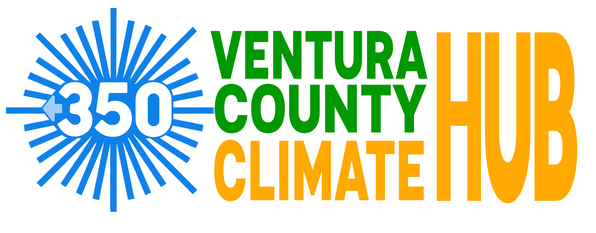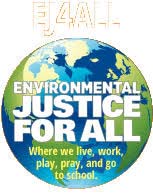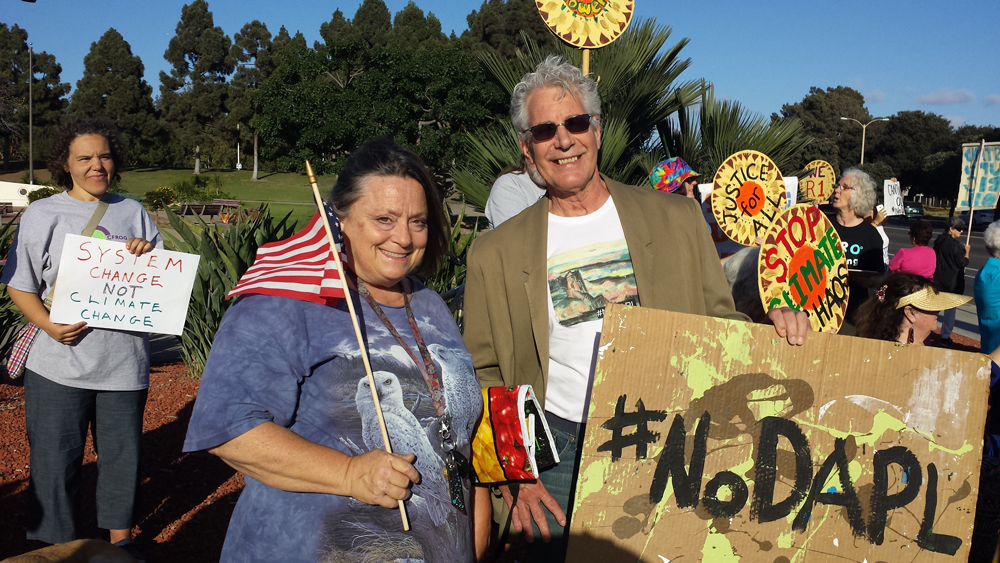350 Ventura County Climate Hub Input for Policies
Environmental Justice Chapter
GOAL A: Develop an Environmental Justice Action Plan with targets for addressing impacts and needs as a framework for all planning decisions.
Policies:
- Mapping. Gather modeling and data to overlay on CalEnviroScreen to identify vulnerable neighborhoods.
- Outreach. Conduct outreach activities, including online and social media, community presentations, event participation, and other strategies to continue to engage the public and solicit input, suggestions, and participation.
- Collaboration. Provide opportunities for collaboration and an opportunity for the cities and the County to receive feedback on potential improvements or changes to the Environmental Justice Action Plan.
- Adaptive management. Environmental justice planning must integrate a monitoring program that is able to detect the needed information for strategy evaluation and incorporate feedback loops to link implementation and monitoring to the decision-making process that also takes advantage of new technologies and climate protection science to discover continuously higher-level, more comprehensive approaches to match the scale, variety and difficult predictability of climate hazards.
BACKGROUND:
What is CalEnviroScreen? https://oehha.ca.gov/calenviroscreen
- A mapping tool that helps identify California communities that are most affected by many sources of pollution, and where people are often especially vulnerable to pollution’s effects.
- Uses environmental, health, and socioeconomic information to produce scores for every census tract in the state.
- Maps the scores so that different communities can be compared. An area with a high score is one that experiences a much higher pollution burden than areas with low scores.
- Ranks communities based on data that are available from state and federal government sources.
GOAL B – Healthy and safe communities
Policies
- Foster a connected community
- Improve baseline resilience in vulnerable populations
- Support basic needs. Invest in social systems that help support basic needs for people, including food, water, shelter, transportation, and healthcare that are vulnerable to breakdown from climate-related crises, especially if they currently suffer from dwindling resources and financial support.
- Affordable non-toxic food. Food grown without toxic inputs should be readily accessible to everyone.
- Eliminate food deserts and develop food hubs. Develop and expand the model of the food hub to connect local regenerative farmers with their local communities.
GOAL C – Sustainable, climate-resilient economy
- Diversify agriculture Crop diversification can greatly increase the resilience of our current agricultural landscape. Polyculture can better assist in the suppression of pest outbreaks through natural biotic barriers that create an abundance of natural enemies. This will also help dampen transmission of pathogens, which have increased and will continue to worsen under current climate scenarios. Production systems such as agriculture are sensitive to climate variation. As climate change variability increases so will the value of resilience, requiring the adoption of diversified agricultural management strategies that are both scientific and policy based.
- Be ready. Seize opportunities to prepare and adapt
GOAL D: Manage buffer zones
- Buffer zones. Make room for water and exclude pollution by maintaining wider buffers
- Plan to avoid hazards. Align plans with hazards with a priority on disadvantaged communities
GOAL E: Promote ag preparedness and food security
- Farm carbon, water and diverse crops
- Subsidize regeneratively grown local food
GOAL F: Protect infrastructure and built systems
- Map long-term effects of sea-level rise and plan for equity so that low-come people of color are not disproportionately affected.
- Preparedness for businesses and organizations. Position your business or organization to recover from extreme events
- Anticipate rising price of carbon. Reduce carbon intensity of product supply chains.
- Look at essential systems in new ways to assure functionality during crises. Invest creatively in the most essential systems providing water, sanitation, drainage, communications, transportation, and energy supporting designs that rely less on large grids and are more self-sufficient to perform neighborhoods or communities are islanded as a result of a disaster.
GOAL G. Reduce emissions from consumption of goods and services
- Gather baseline data and target consumption-based emissions. Develop strategies to reduce local and global impacts of consumer choices.
- Educate consumers. Provide information towards economical, sustainable consumption.
GOAL H: Increase emergency preparedness and prevention
- Risk reduction. Reduce forest flammability, improve biodiversity and water supply
- Preparedness. Prepare yourself for emergencies, learn CPR and first aid. Expand Community Emergency Response Team programs throughout Ventura County.
- Collaboration. Invest in radical collaboration for interagency preparedness
- Reserve fund for people displaced by disasters. Seek to create a regional fund for disaster response that can provide assistance to local government agencies to address urgent disaster impacts, help cover relocation costs of those displaced by disasters and climate change effects, etc.
GOAL I: Monitor climate and its effects
- Reality check. Monitor real-time conditions to refine climate change forecasts with a priority on the effects on disadvantaged and other vulnerable communities
PROCESS
Gather baselines and create an Environmental Justice Plan
Align investments with values, coordinate incentives and funding streams
Measure progress over time
JUSTIFICATION
Land use decisions should not pose environmental hazards to disadvantaged populations. Moreover, the county should be proactive in plans and strategies to address
1) historic patterns of inequity, especially exposure to pollution, particularly around power plants, oil and gas operations, and farms, and
2) acute situations of inequity, such as food deserts and lack of housing and transportation.


